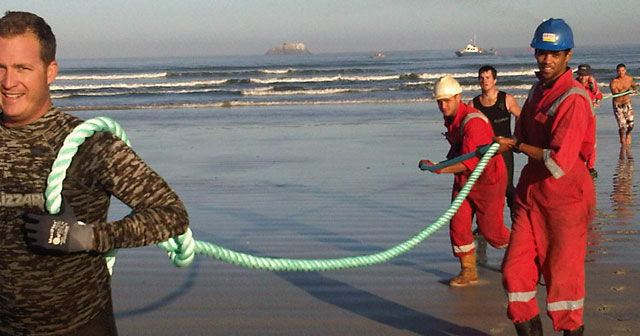
Next month, the gigantic West African Cable System (Wacs) will come online, bringing around 400Gbit/s of submarine fibre capacity to SA at launch. But what does this increase in capacity mean for SA consumers and Internet service providers?
Sean Nourse, executive for connectivity at Internet Solutions, says that although the effects of Wacs may not be felt by consumers in the short term, they most certainly will be felt in the longer term.
“There’s enough capacity coming into SA already; the bottleneck is on national backhaul and the last mile [into homes]. The effect on the consumer all has to do with how much capacity Internet service providers choose to take on Wacs, as they’re already invested elsewhere,” he says.
Nourse says consumers will benefit insofar as service providers having another option for resilience and redundancy should mean better service quality. “But consumers won’t get better speeds for now and, as it’s a net new cost for service providers, you might not see prices fall immediately.”
Until consumers can actually utilise more of the available capacity, Nourse says the cost benefit won’t reach them. “Seacom [along the east coast] made a massive difference in 2009 because there was a need for capacity then, but even though the next cable Eassy was larger the capacity couldn’t be utilised and it didn’t make nearly as much of a difference.”

One of the biggest local investors in Wacs is mobile operator MTN. Karel Pienaar, head of the group’s SA business, says the huge excess of capacity supply will drive the international component of data costs down. “It will eventually benefit consumers in terms of pricing, but also in terms of experience.”
He says both resilience and quality of service are destined to improve and price reductions will be felt first at the corporate level. “We do a lot of provisioning of international corporate bandwidth and wholesale to other operators and they are going to see benefits.”
Pienaar says it will take a couple of months for the effects to be felt and that corporate clients can expect to see pricing changes from around July. He says MTN is already noticing some price reductions in large deals that are still being negotiated.
He says the real bottleneck is in allowing consumers to make use of the added capacity. MTN, he says, is desperate for access to more spectrum that would allow it to roll out commercial networks using next-generation broadband technology.
“Until spectrum scarcity is removed, price changes will be limited,” he says. He adds data demand is growing and MTN has seen a 20%-30% increase in data traffic this quarter. “From one petabyte at the end of last year, we’re now up to 1,3PB in this quarter.”
Lex van Wyk, MD of data centre company Teraco, shares the view that the benefits of Wacs won’t be felt by consumers immediately. Teraco will offer direct access to Wacs bandwidth from its data centre facilities.
Van Wyk agrees that the real bottleneck is in last-mile infrastructure rather than in international bandwidth.
He also expects local content storage and distribution to grow. “Video streaming can now be cached in SA. The last mile is going to be a problem for a while to come, but lots of people are trenching fibre and the spectrum licensing process is making progress, but until that’s done, accessing the capacity is going to be difficult.” — (c) 2012 NewsCentral Media

